2015 AIGA Medalist: Marcia Lausen
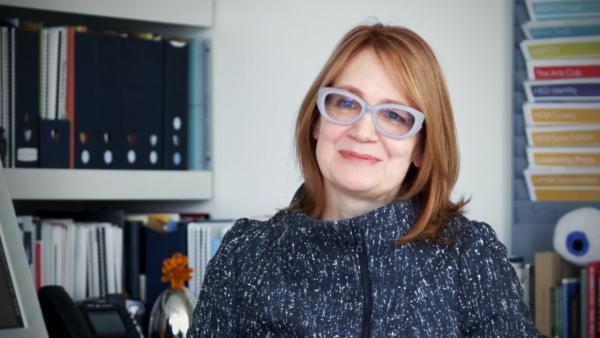
Recognition
2015 AIGA Medal
Born
1959, Fort Wayne, Indiana
By Molly Heintz
September 7, 2015
Follow Us
Recognized for demonstrating design’s influence through Design for Democracy and for her academic leadership in teaching how to remain relevant in a rapidly changing world.
Susan Verba, one of the founders of the design firm Studio/lab, remembers exploring her neighborhood in Milan in 1989 with fellow founder Marcia Lausen. During Lausen’s visit, they came across a three-volume set of Giambattista Bodoni’s Manuale Tipografico, reprinted from the original 1818 edition in 900 numbered copies. Though way out of their budgets at the time, Verba and Lausen bought the books together. “These books became a kind of savings account—or personal pawn shop—that we passed back and forth during the years of starting our business,” says Verba. “Whichever one of us needed money would sell the books back to the other.” The Bodoni books currently live with Lausen in Chicago, the city she made home more than two decades ago and where she launched Studio/lab in 1997.
Clients visiting Lausen’s studio for the first time might be surprised to find not a table, not a pin-up wall, but an entire room dedicated to the project at hand. With almost 8,000 square feet of space and roughly 10 staffers, Studio/lab can afford to give projects room to breathe. Long-term clients such as Steelcase can move in and become part of the design process, rather than simply sit on the receiving end of a biweekly presentation. In fact, it was the space itself—complete with striking city views—that initially cemented the relationship between Steelcase and Studio/lab. “We designed our studio for the way we work, and that really made a connection with them,” Lausen explains.
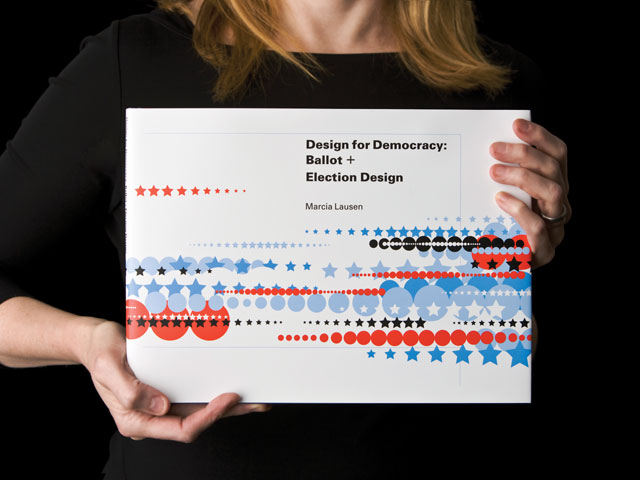
"Design for Democracy," AIGA and University of Chicago Press, 2007.
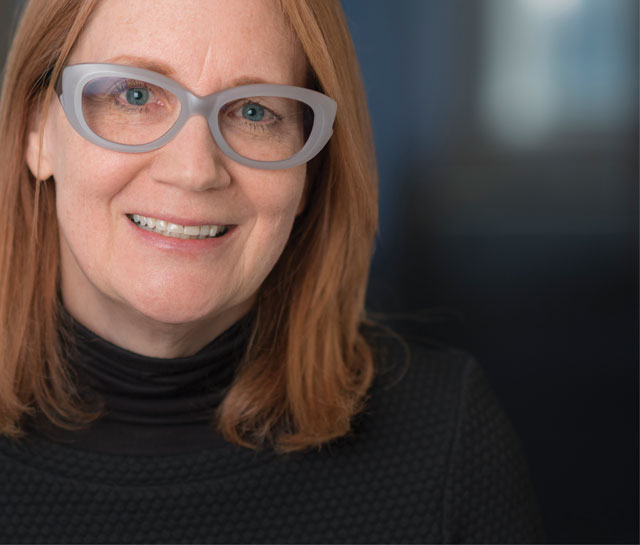
Portrait of Marcia Lausen.
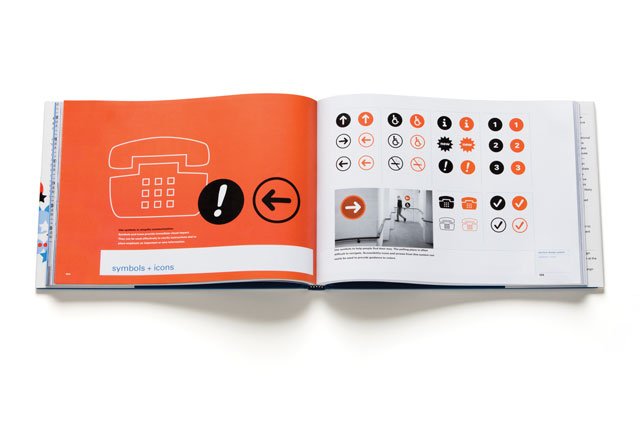
"Design for Democracy," AIGA and University of Chicago Press.
The value of taking the space and time to work out problems is something Lausen learned growing up in Fort Wayne, Indiana. Her father was an engineer who replied to his daughter’s questions not with a simple answer, but by setting up an experiment so she could witness the answer firsthand. “I grew up surrounded by compasses and templates,” says Lausen. In high school, Lausen gravitated toward art classes, and her work stood apart for its bold, graphic style. “When we were to paint a still life, mine was a giant cross section of a single bell pepper that looked like a pop art print,” Lausen recalls.
As an undergraduate at Indiana University, Lausen majored in graphic design and then set her sights on graduate school at Yale University. When the school turned her down, the Midwesterner headed to the East Coast determined to expand her portfolio in Boston and gradually work her way to New Haven. One of her early design jobs was with Samina Quraeshi, cofounder of the Boston firm, Shepard Quraeshi Associates and later director of design at the National Endowment for the Arts. Lausen credits Quraeshi with teaching her the fine art of diplomacy. “I learned to be tough and make an argument for why things should change. Samina may not have wanted to be described this way, but she was a politician. I watched her achieve good things because she was clever and diplomatic and smart.”
With a few years of experience under her belt, Lausen reapplied to Yale and was soon studying with storied faculty such as Paul Rand. One of Rand’s assignments was to create a page layout for his 1965 essay, “Design and the Play Instinct.” It wasn’t the assignment, but the content of Rand’s essay that made a lasting impression on Lausen and influenced her approach to her own work upon graduating in 1985. “The rules are a means to the end, the conditions the player must understand thoroughly and work with in order to participate,” Rand wrote. “For the student, the limits of a well-stated problem operate in much the same way.” To this day, Lausen still assigns this text to her class.

"Design for Democracy," AIGA and University of Chicago Press, 2007.
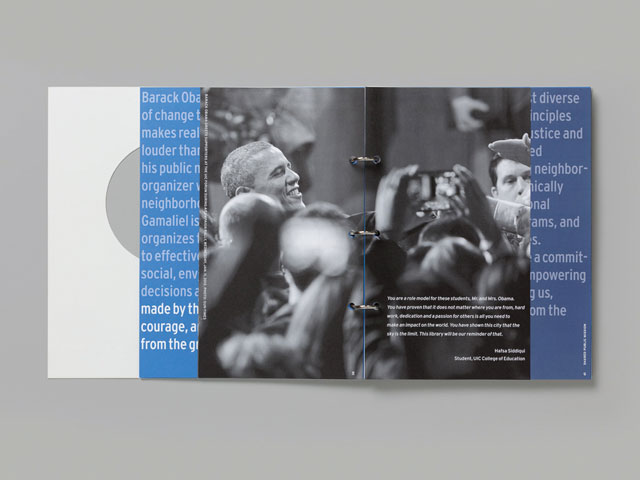
Proposal to host the Barack Obama Presidential Library, University of Illinois at Chicago and the community of North Lawndale, 2014.

Spertus Institute wayfinding, 2009.
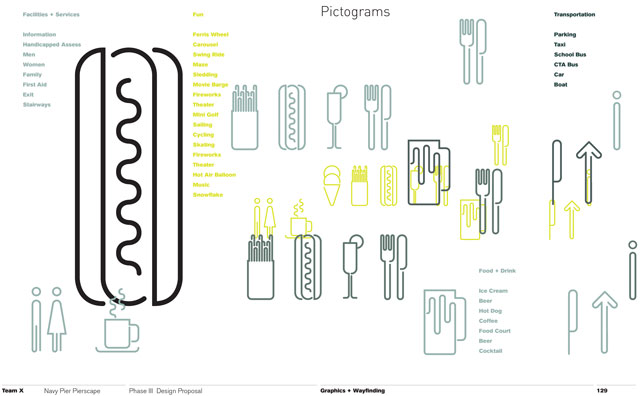
Team X, Chicago Navy Pier pierscape competition entry with Xavier Vendrell Studio, 2012.
“When I knew Marcia as a student at Yale, she was very diligent, quiet, and had a distinctive giggle,” says Philip Burton, a former professor of Lausen’s and now the graphic design chair of the School of Design at the University of Illinois at Chicago (UIC). He reencountered Lausen in Chicago in the mid-1990s, and by then she had become a “force to be reckoned with,” according to Burton. By that time she had tried out several different positions in Chicago, including a stint working in advertising at Leo Burnett, before partnering with Yale classmate David Williams to launch an independent studio. Lausen, Williams, and Burton would meet Wednesday evenings for dinner at Sole Mio, a favorite Italian restaurant of theirs. At their usual table by the window, they discussed their careers and debated design issues over good food and good wine. It was at one of these dinners that Burton proposed that Lausen teach in the design program at UIC.
Burton’s tableside suggestion was the start of an academic trajectory that would come to define Lausen’s career as well as her design philosophy. She began as an adjunct professor at UIC and in 1997 cofounded the Chicago office of Studio/lab (the original office was established in San Francisco by Greg Lynch and Lausen’s Yale classmate and Bodoni book co-owner, Susan Verba). The company’s name was a nod to the duo’s respective backgrounds: Verba’s in engineering and Lynch’s in fine arts (the “lab” also referred to their Labrador retriever that hung around the office). With Lausen at its helm, the Chicago branch operated independently, but collaborated often with the West Coast outpost.
So began Lausen’s dual career as practitioner and professor. This life suited her, as there has typically been little distinction in Lausen’s mind between school and practice. “I treat the office as a classroom and treat the classroom as a studio,” she says. Several former students have gone on to become Studio/lab employees and praise Lausen’s ability to frame a design problem as well as create an environment where others on the team feel confident enough to play a leading role. Meeyoung Melamed, a student turned staffer, notes that Lausen is generous about crediting each person who works on a project. “She really puts design in front of everything; it’s not about seeing her name plastered everywhere.”
Lausen’s advocation of design above all is clear in projects like Studio/lab’s environmental graphics and wayfinding for the Spertus Institute for Jewish Learning and Leadership, a library, college, and gallery in Chicago. Though Studio/lab had little experience in environmental graphics at the time, the building’s architects were sold by Lausen’s approach. Studio/lab created a system of overlapping type that has a flickering effect—a reference to Spertus’ flame logo—and integrated it seamlessly throughout the building’s light-filled lobby. The awards jury for the Society for Experiential Graphic Design was dazzled by the project. One judge commented, “The beauty in the typography and the elegant simplicity are truly enchanting.”
Lausen’s ability to forge into unknown territory with finesse has served her well, both at Studio/lab and at UIC. She became a leading advocate for creating a separate School of Design within the College of Architecture and the Arts at UIC, a herculean effort that involved many layers of bureaucracy and faculty approvals over the course of several years. During this period the college’s dean, Judith Kirshner (now deputy director of the Art Institute of Chicago) said:
“One of the things that was very striking about the whole process was Marcia’s ability to convince her colleagues—art historians with doctorates, artists who have won MacArthur grants, architects who have built great buildings—that design is a knowledge system for the way one looks at the world. Marcia showed us that design is more than mere ornamentation, that design doesn’t come after the problem solving, but that design is central to the way one addresses not just design problems, but also environmental, cultural, political, and social problems.”
The School of Design gained its independence in August of 2013, and Lausen is now its director.
This potent combination of diplomacy and tenacity enabled Lausen’s work on Design for Democracy’s first ballot and election project, a seven-year endeavor that began with the contested presidential election of 2000 and public scrutiny of Florida’s infamous butterfly ballot. At the time, Chicago used a similar ballot and Lausen, who believed that the ballot issue was fundamentally a design problem, decided to take action and rally the support of AIGA. With her UIC students, she redesigned the ballots for Cook County, Illinois, and in 2004 was named a “Master of Design” by Fast Company for her efforts. Lausen’s 2007 book, Design for Democracy: Ballot and Election Design, documents the process.
Along with this major civic effort, Lausen and Studio/lab have worked on an identity for the Alzheimer’s Association, packaging for Mattel’s Hot Wheels toy cars, publications for the American Institute of Architects, and branding for Motorola, among many other projects. Having recently participated in a competition to redesign public spaces on Chicago’s Navy Pier, Lausen says she feels prepared for Studio/lab’s role in helping to develop UIC’s proposal for the Obama Library, which has been chosen as one of four finalists (the winner will be announced this spring).
Back in Lausen’s own library, the Bodoni books rest easy, their days as collateral long behind them.
Resources
Armin Vit and Bryony Gomez-Palacio, “Marcia Lausen,” in Women Of Design: Influence And Inspiration From The Original Trailblazers To The New Groundbreakers, How Books, 2008.
Marcia Lausen, Design for Democracy: Ballot and Election Design, University of Chicago Press, 2007.
Paul Rand, “Design and the Play Instinct,” in Education of Vision, 4th ed., George Braziller, 1965.
“Masters of Design: Marcia Lausen,” Fast Company, June 2004.
Jessie Scanlon, “Wanted: A Legible Voting Ballot,” Slate.com, October 6, 2003.
David Sokol, “Let There Be Light,” Spertus Institute of Jewish Studies, segdDESIGN No. 21, 2008.
Videos:
Marcia Lausen at AIGA’s 2008 GAIN Conference
“Marcia Lausen: Understanding Design”
Interviews with Philip Burton, Tara Kennedy, Judith Kirshner, Marcia Lausen, Meeyoung Melamed, and Susan Verba.